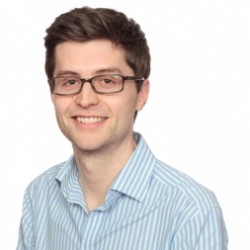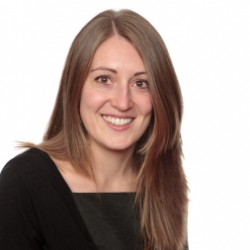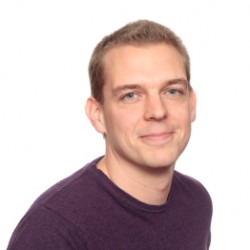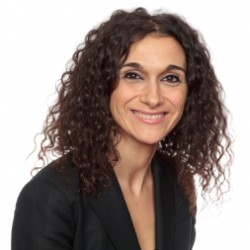Meet the CSC’s newest recruits
The CSC has marked the start of the academic year with the appointment of Dr Andre Brown, Dr Helena Cochemé, Dr Toby Warnecke and Dr Silvia Santos, who will lead research groups in Behavioural Genomics, Redox Metabolism, Molecular Systems, and Quantitative Cell Biology.
 Andre Brown (Behavioural Genomics Group) joined the CSC’s Integrative Biology section from the Laboratory of Molecular Biology in Cambridge, where he spent four years as a postdoctoral scientist studying worm behaviour. He was interested in finding better ways of phenotyping behaviour. “We have tools to sequence genomes and manipulate genomes, in all kinds of ways, but the ability to image the consequences of the manipulations is more limited,” explains Andre. “We built a medium throughput tracking system that could test hundreds of strains of worms, producing the largest behavioural dataset that I am aware of,” he adds.
Andre Brown (Behavioural Genomics Group) joined the CSC’s Integrative Biology section from the Laboratory of Molecular Biology in Cambridge, where he spent four years as a postdoctoral scientist studying worm behaviour. He was interested in finding better ways of phenotyping behaviour. “We have tools to sequence genomes and manipulate genomes, in all kinds of ways, but the ability to image the consequences of the manipulations is more limited,” explains Andre. “We built a medium throughput tracking system that could test hundreds of strains of worms, producing the largest behavioural dataset that I am aware of,” he adds.
Andre’s goal at the CSC is to build a higher throughput tracker with the ability to test thousands of strains of worms and potentially screen genome-wide RNAi or recombinant inbred lines. “The CSC’s Integrative Biology section is very exciting for me, there’s organismal level quantitative biology, which is not that common, and it’s what I’m interested in – behaviour of whole animals. Being on a hospital site is also very exciting for the potential interactions down the line. Everything I’m doing right now is basic science but the kinds of behavioural analysis could eventually be applied to people as well.”
 Helena Cochemé (Redox Metabolism Group) joins Genes and Metabolism from University College London (UCL), where she spent her postdoctoral career researching ageing in the fruit fly Drosophila. “Fruit flies are a great model system for studying ageing. Their lifespan is typically 3 months, so we can get lots of information in a short timeframe,” says Helena. “Plus the strong evolutionary conservation with mammals means that any discoveries ultimately have the potential to benefit humans. Through pharmacological or genetic interventions, we are able to improve health and extend lifespan in model organisms such as flies. However, what remains challenging is explaining the underlying mechanisms.” At the CSC, Helena will investigate the importance of redox signalling in metabolism, disease and ageing, while developing new molecular techniques to examine these processes in living flies.
Helena Cochemé (Redox Metabolism Group) joins Genes and Metabolism from University College London (UCL), where she spent her postdoctoral career researching ageing in the fruit fly Drosophila. “Fruit flies are a great model system for studying ageing. Their lifespan is typically 3 months, so we can get lots of information in a short timeframe,” says Helena. “Plus the strong evolutionary conservation with mammals means that any discoveries ultimately have the potential to benefit humans. Through pharmacological or genetic interventions, we are able to improve health and extend lifespan in model organisms such as flies. However, what remains challenging is explaining the underlying mechanisms.” At the CSC, Helena will investigate the importance of redox signalling in metabolism, disease and ageing, while developing new molecular techniques to examine these processes in living flies.
Helena looks forward to working closely with Irene Miguel-Aliaga (Gut Signalling and Metabolism Group), as well as collaborating with other groups at the CSC. “One of the main reasons that drew me to the CSC was the interdisciplinary nature of the institute. Fruit flies are an excellent opportunity for screening ideas,” she adds.
 Toby Warnecke (Molecular Systems Group), previously at the Centre for Genomic Regulation (CRG) in Barcelona, also joins the institute’s Integrative Biology section. His research at the CRG was mostly focused on molecular evolution, which involved looking at sequence information from a number of different species to determine how evolution at the sequence level is linked to chromatin architecture.
Toby Warnecke (Molecular Systems Group), previously at the Centre for Genomic Regulation (CRG) in Barcelona, also joins the institute’s Integrative Biology section. His research at the CRG was mostly focused on molecular evolution, which involved looking at sequence information from a number of different species to determine how evolution at the sequence level is linked to chromatin architecture.
At the CSC, Toby is interested in investigating how evolutionary processes depend on the molecular machinery present in the cell and might therefore differ a lot between different species. ” I am currently working on an eclectic mix of projects, including on RNA and protein chaperones with groups in Croatia, Berlin and the US, and am looking forward to collaborating with different groups across the CSC,” he explains.
 Silvia Santos (Quantitative Cell Biology) joins the CSC’s Epigenetics research section from Stanford University, California, where she spent 4.5 years as a postdoctoral scientist in the laboratory of Professor Jim Ferrell – one of the world leading experts in Systems Biology.
Silvia Santos (Quantitative Cell Biology) joins the CSC’s Epigenetics research section from Stanford University, California, where she spent 4.5 years as a postdoctoral scientist in the laboratory of Professor Jim Ferrell – one of the world leading experts in Systems Biology.
At the CSC, Silvia is interested in answering fundamental biological questions through a combination of experiments and theory. Her research will explore cell division, focusing specifically on how changes to the microenvironment of the cell, from malignancies, pathogens or drugs, for example, impact on remodelling of cell division regulatory networks. “What we want to do here is to use new methods to revisit a classic question in developmental biology: the switch from embryonic to somatic cell division,” she explains. “Our approach will combine mathematical modelling with experimental methods including high content screening, microscopy and mass spectroscopy, to help answer some medically relevant questions,” she adds.
YJ
